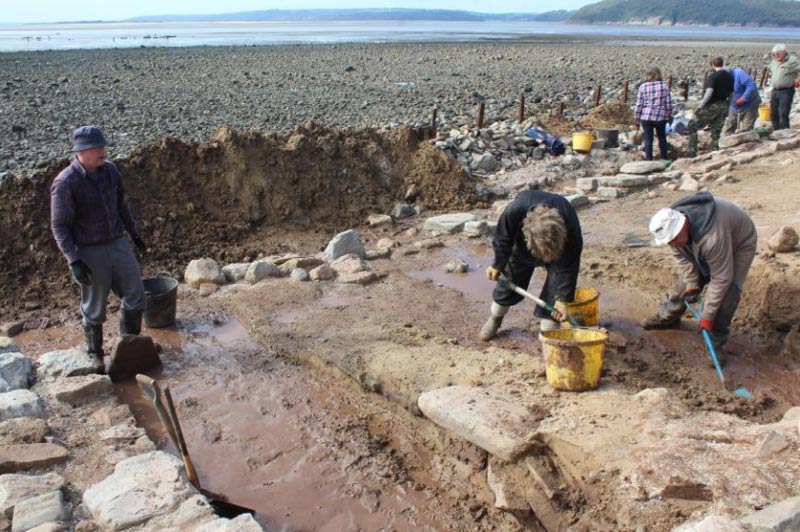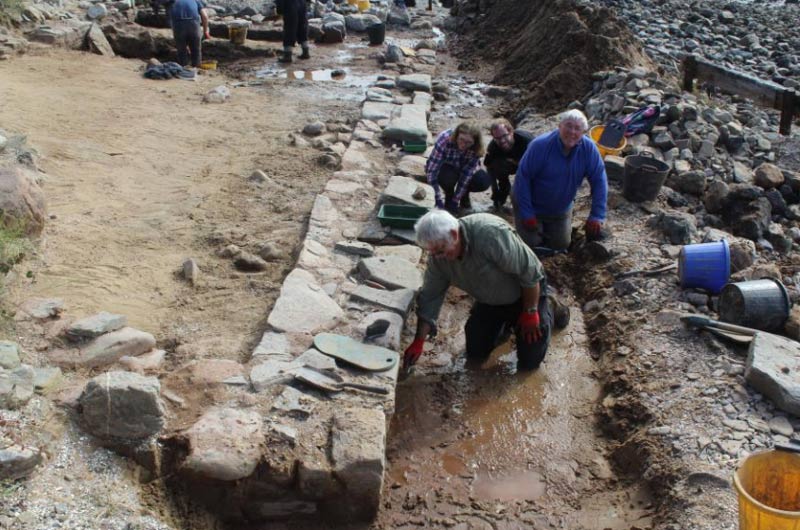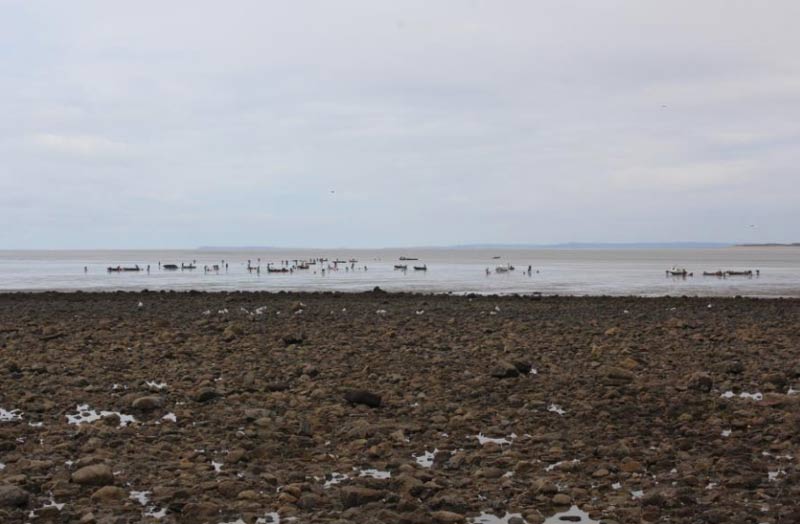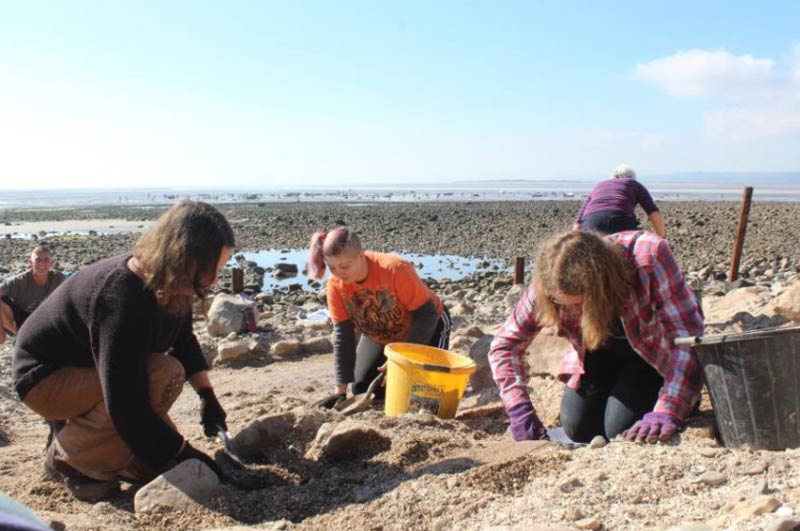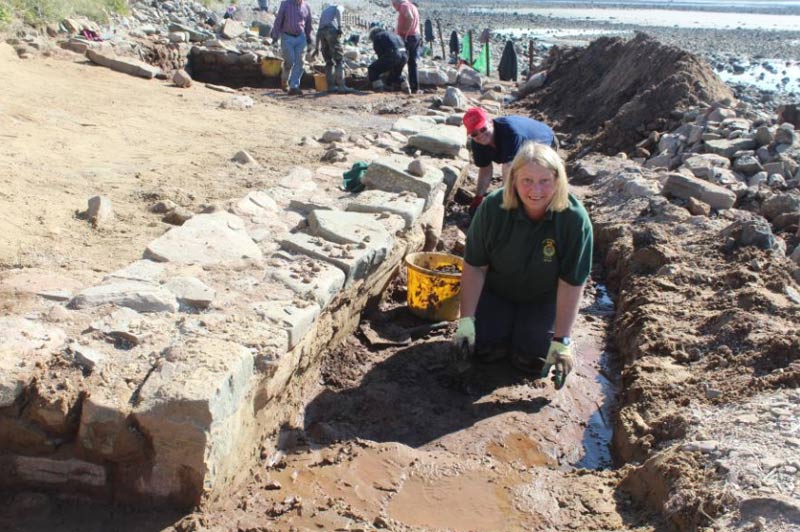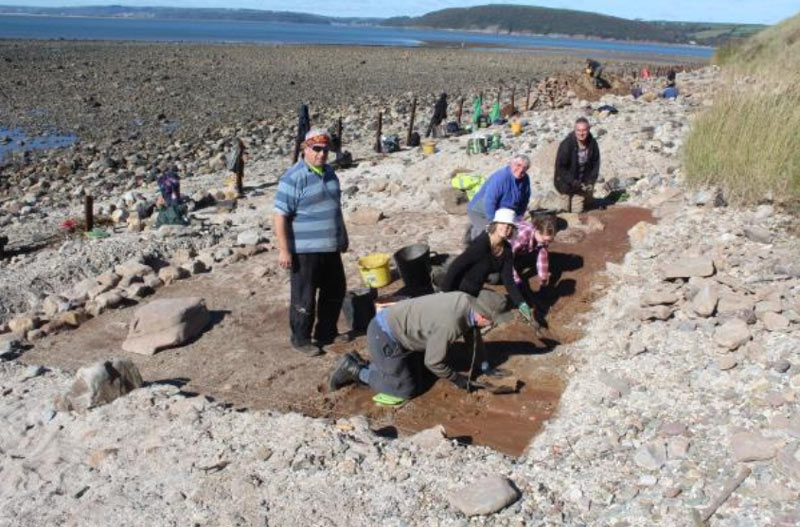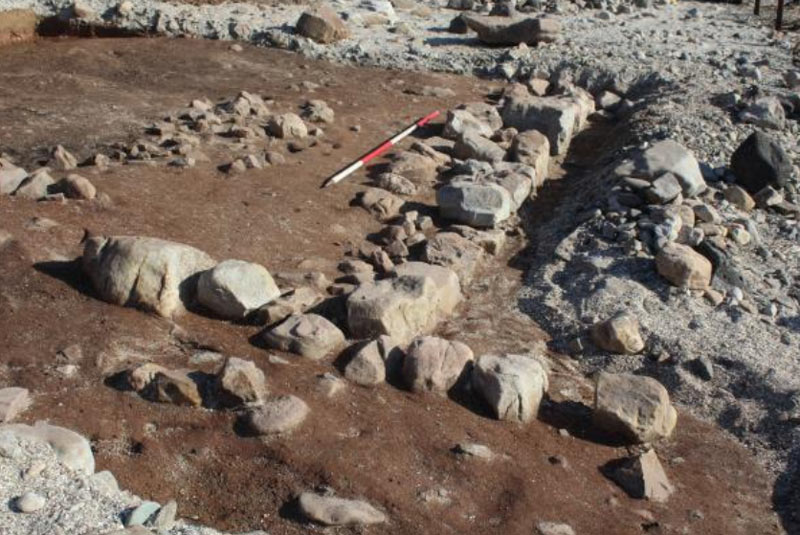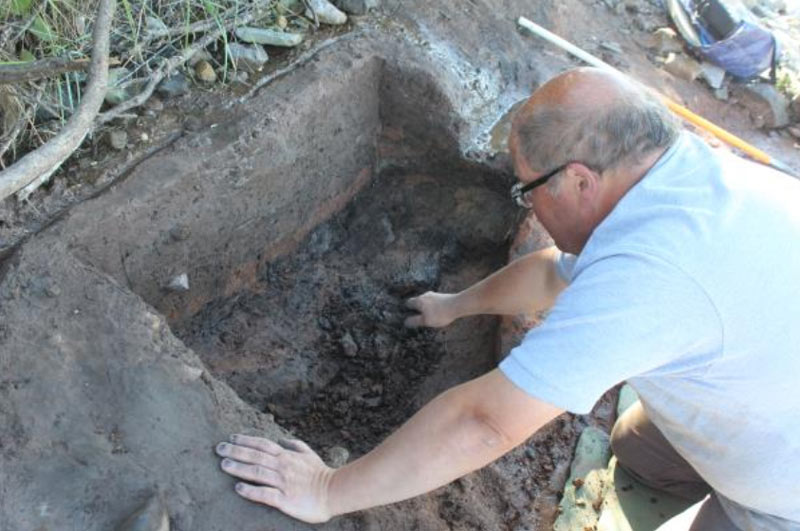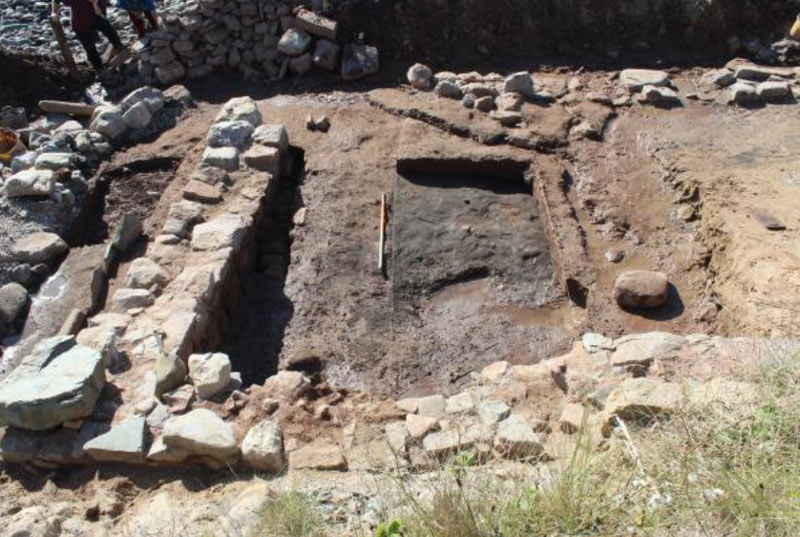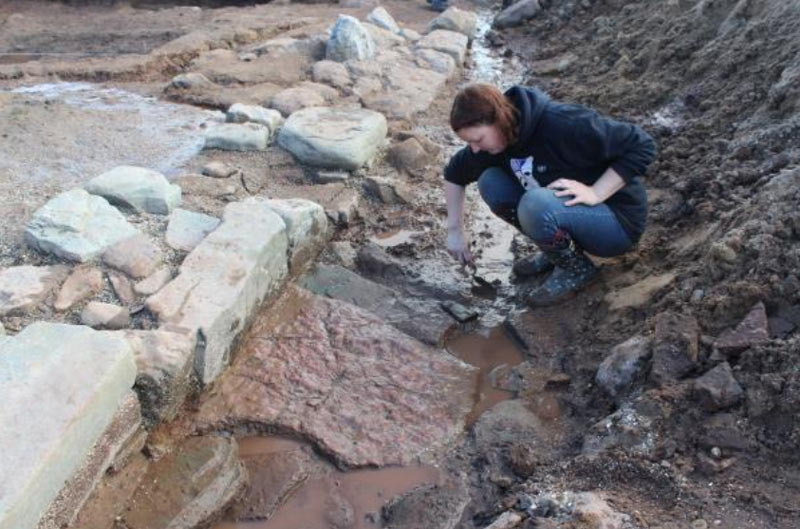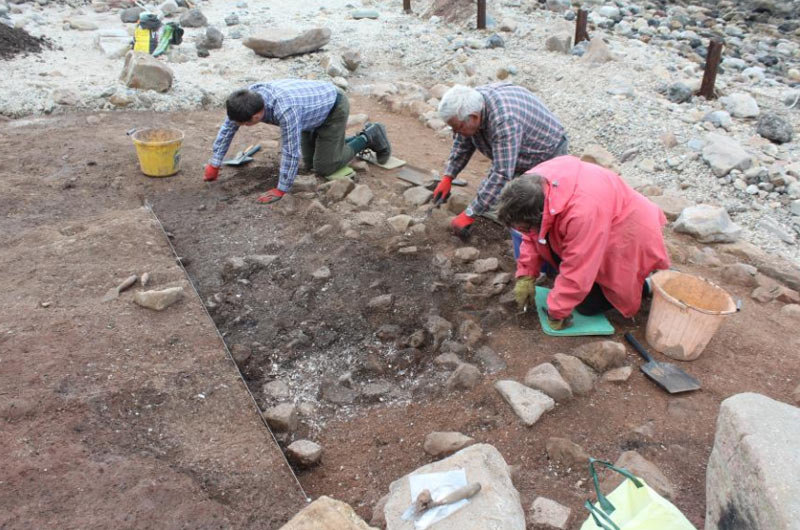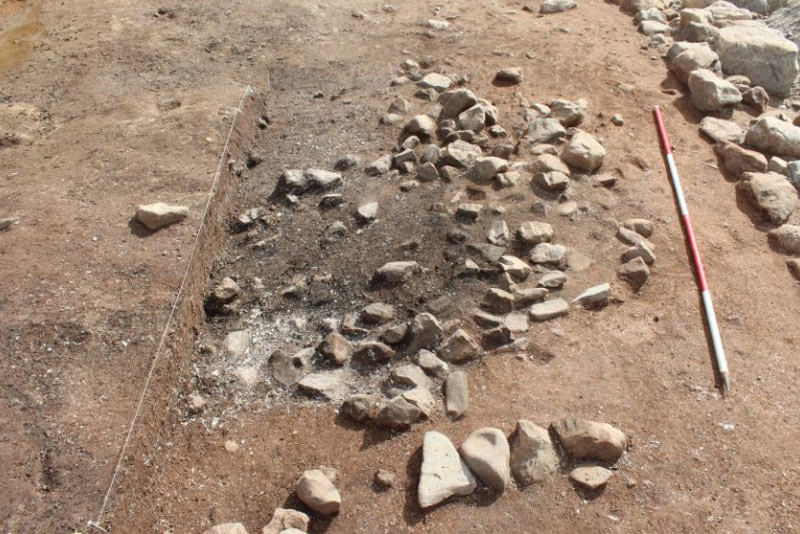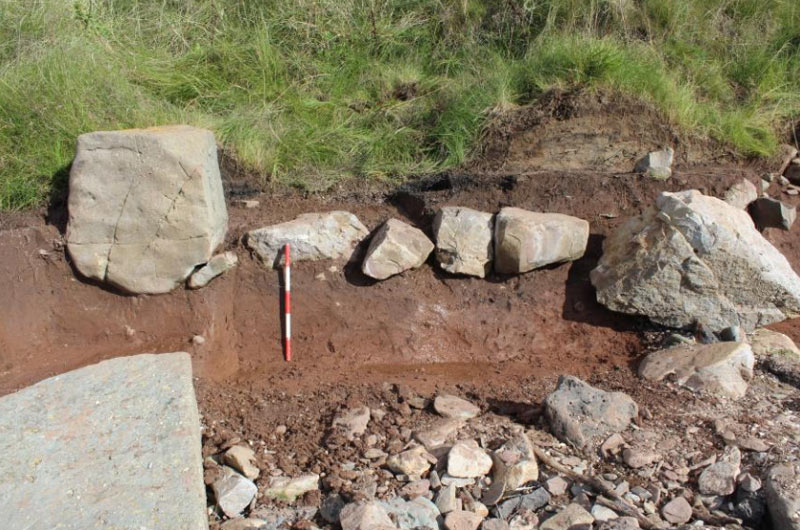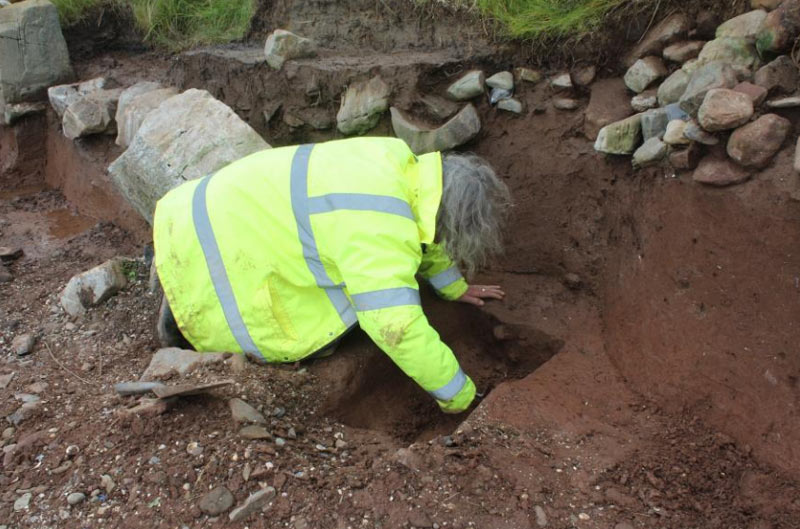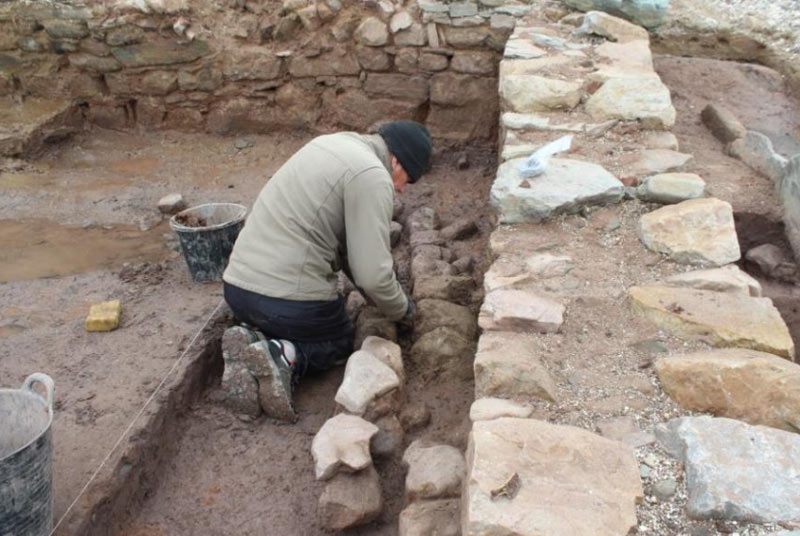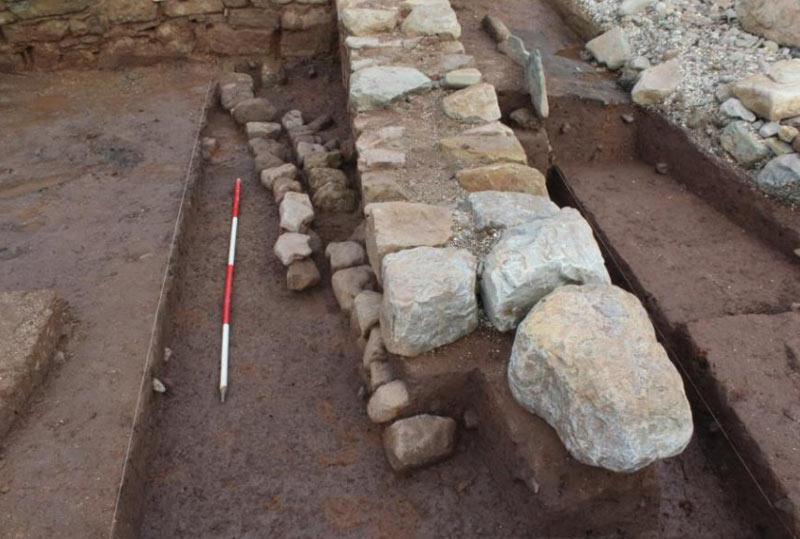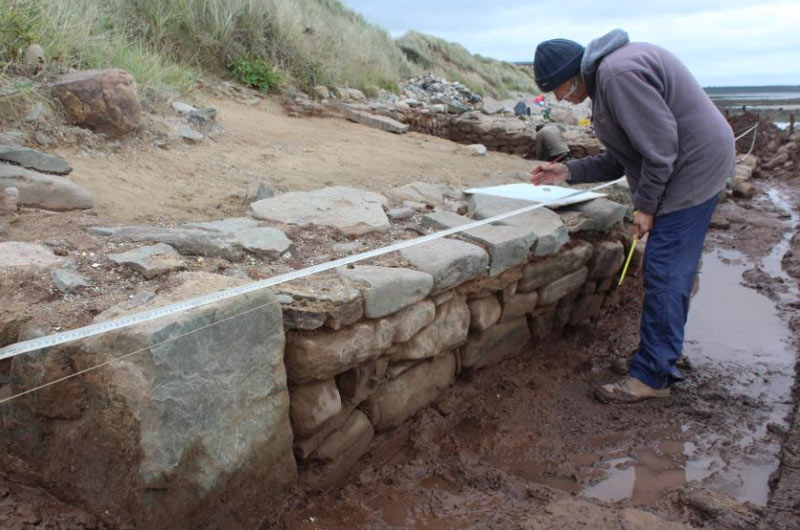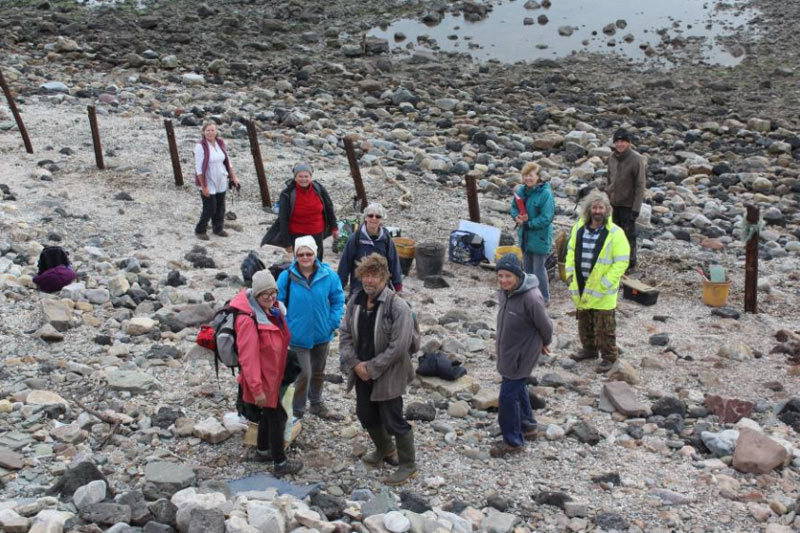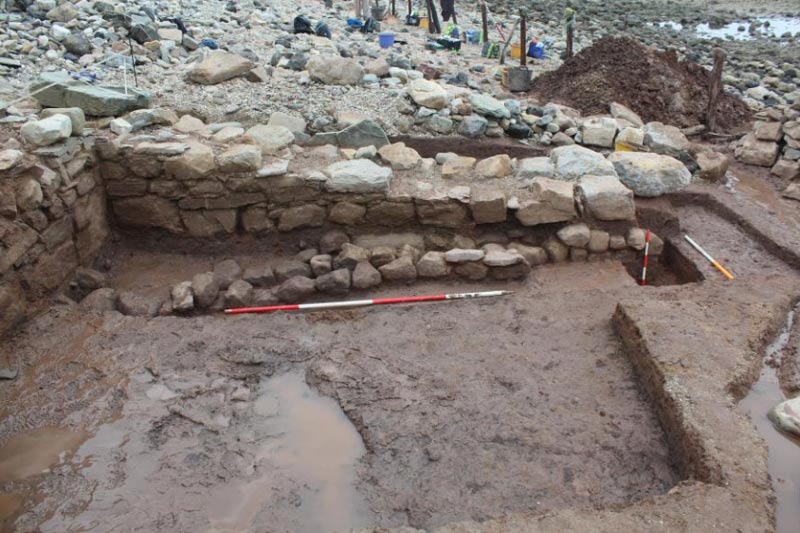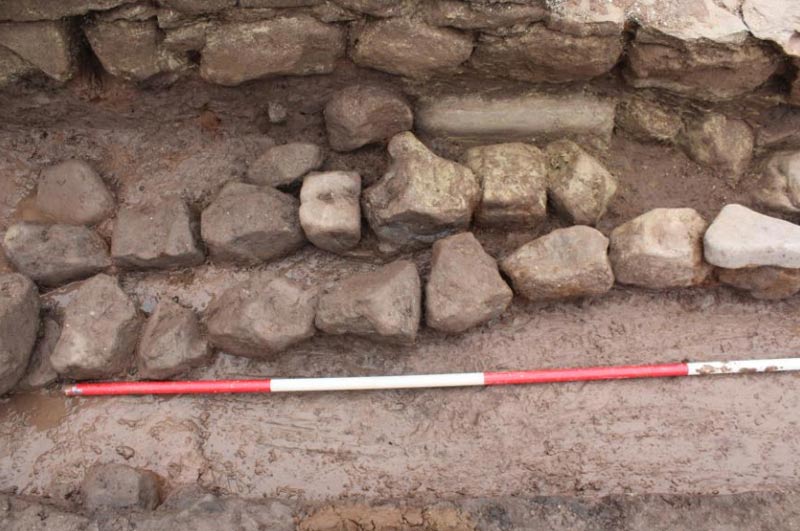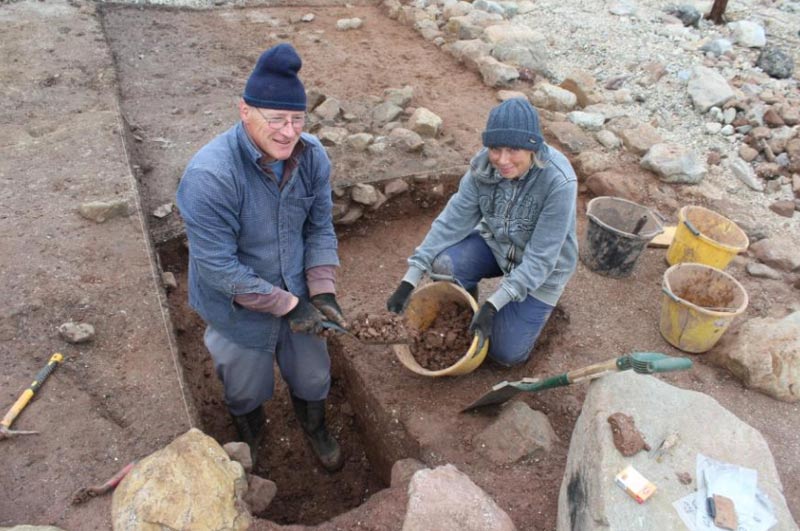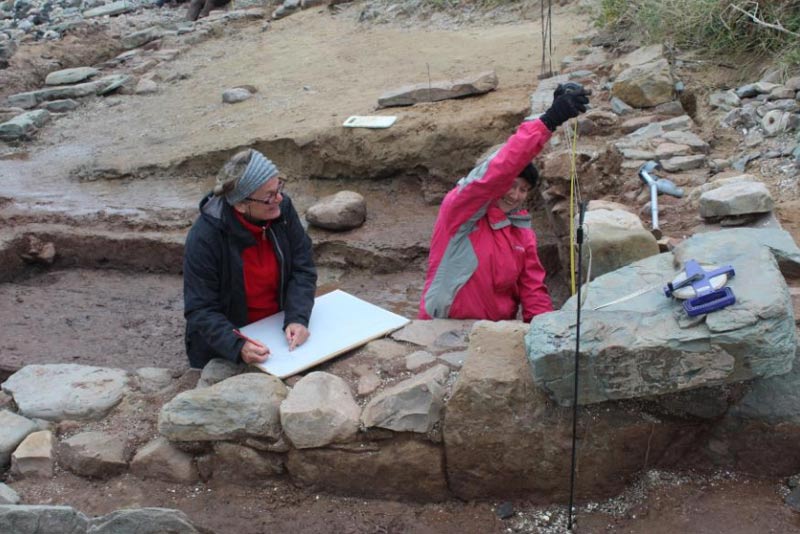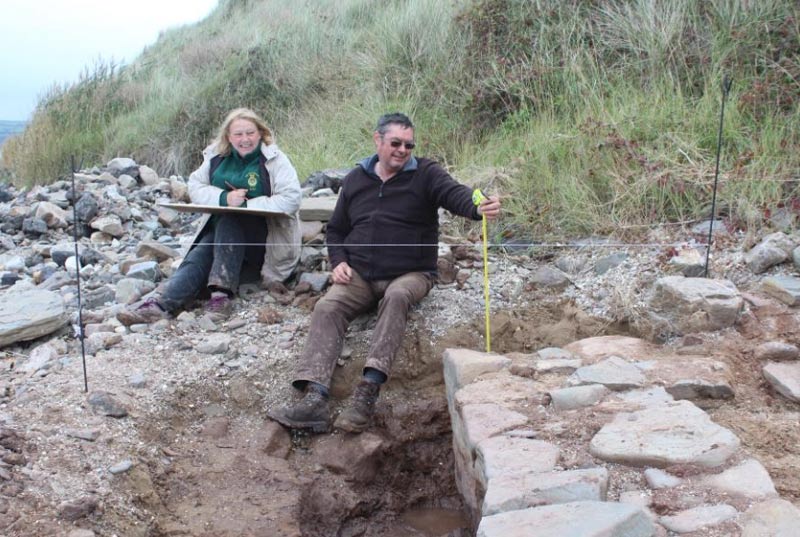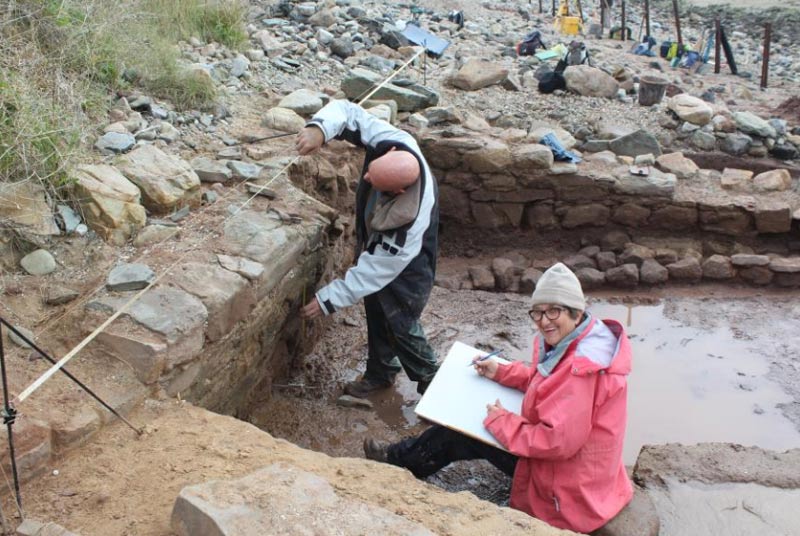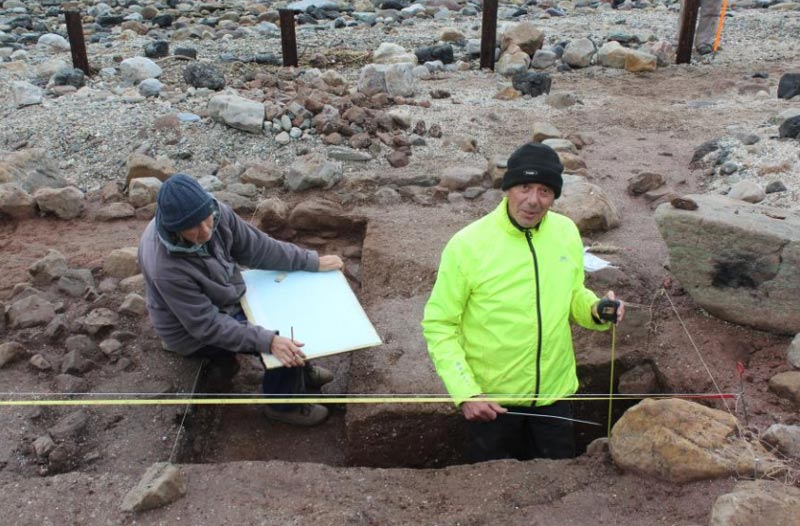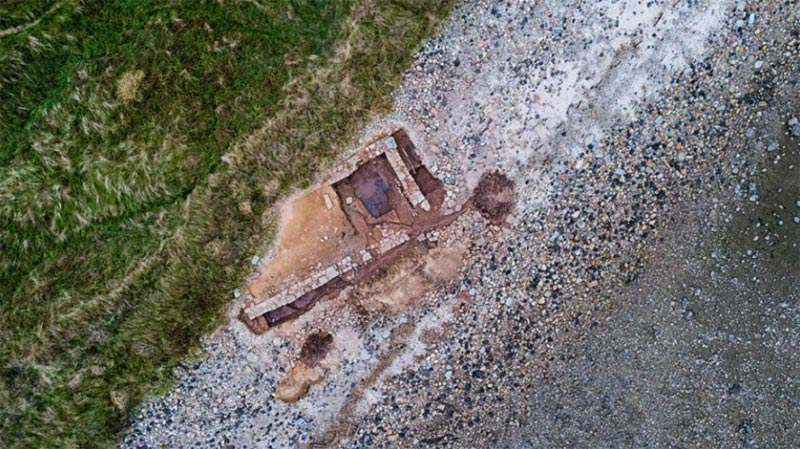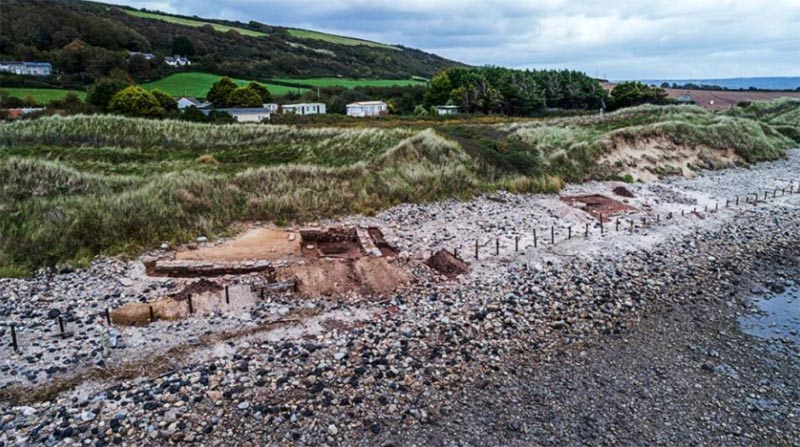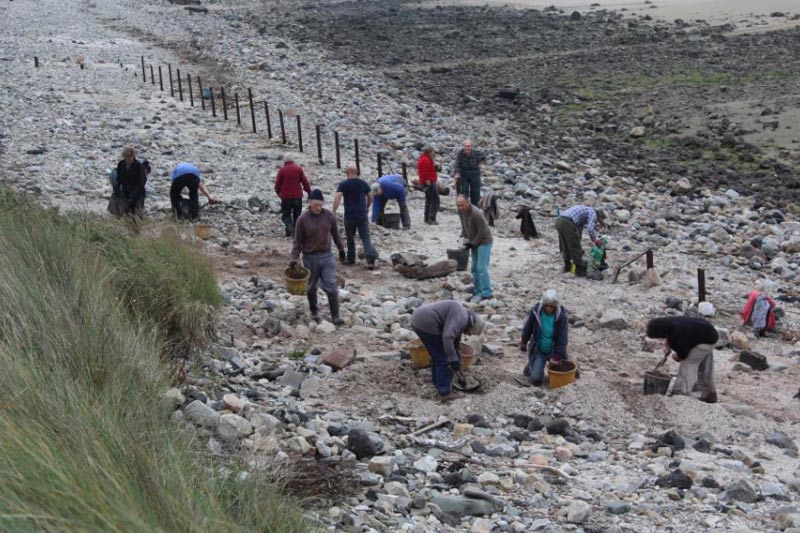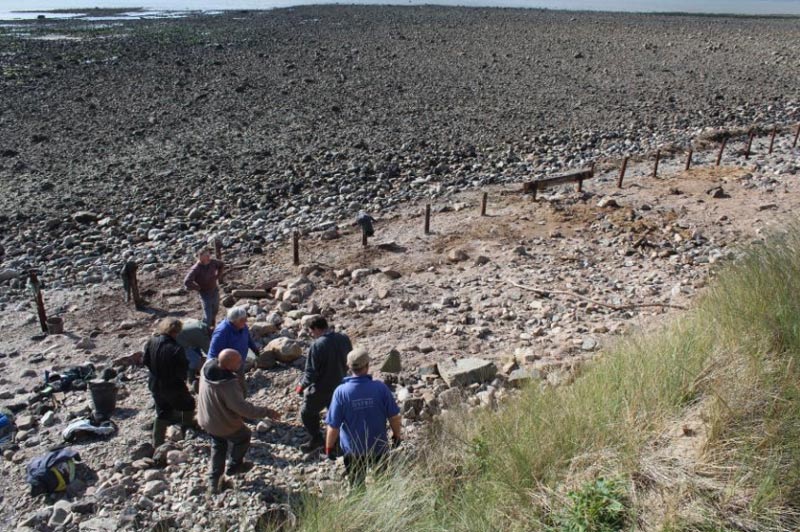
|
|
| Day 1
Just like last year the weather is beautiful and this does help when you have to spend the day moving the stones and shingle covering Building 7; stones and shingle that were used to backfill the site at the end of last year’s work!
|
|
| Day 2
Another lovely day in Carmarthen Bay, again just like last year. The walls of Building 7 have re-emerged and can clearly be seen again. Over the winter there has been noticeable damage to the southwest corner of the building.
|
|
| Day 3
Hubert, Geraint and Jon continued to remove the backfill from last year’s trench in Building 7. It is very hard and muddy work and the spoil heap (seen in the background) continues to grow.
Whilst along the outside of the west wall Paul, Peter, Hannah and Hywel removed layers of sand and clay that have built up against the wall. We would like to understand what is happening outside the building and if possible identify a buried land surface but the amount of water seeping through the sand might not make this possible.
We were quite surprised at the number of people who appeared on the beach in the morning who then waded out into shallow waters at low tide and spent the day cockling out on the sands. Unfortunately the picture below makes them look like ants but an officer from the Welsh Government Marine and Fisheries said there were about 90 people out there.
|
|
| Day 4
Work is progressing well. We are nearly down to floor level in Building 7 and work is underway clearing stones and shingle from across the area of Building 8 which lies to the south of Building 7. Little survives of this building and it took a while to locate it underneath the stones and shingle. Although it looks like Haley, Marilena, Lyn and Hannah (below) are making sandcastles they are actually clearing all the shingle from the remains of the walls of Building 8. There is no other way than getting down on your hands and knees and shovelling it away. In the distance you can see people out cockling again.
|
|
| Day 5
After having cleared Building 8 of stone and shingle the area was given a hard trowelling. In contrast to Building 7 to the north, the walls of Building 8 have not survived well and we remain uncertain if we are inside or outside what we presume was once a building.
Rob completed the excavation of a sample of the deposits visible on the dune edge to the north of Building 5. The individual layers all contained charcoal and samples of the deposits were taken for future analysis and carbon dating.
|
|
| Day 6
Work progresses getting down to the original floor layers at the southern end of Building 7. As discovered last year the beaten clay and ash floor contains few finds other than crushed cockle and mussel shell – it is remarkably clean.
The dark beaten clay and ash floor within Building 7 can be seen to the right of the 2m scale; this was removed to the left of the scale in 2017. On her first day on an archaeological dig Bryony confirms that there was a doorway on the west side of Building 7, by discovering a paved area on the outside of what we now realise is a blocked up doorway. The large red sandstone slab seen below is enormous and runs under the stone blocking.
|
|
| Day 7
Today’s work is concentrated on Building 8 and Building 4.
We still don’t know if we are outside or inside the building but suspect we have evidence of a large pit beginning to show filled with ash, stone, many mussel and cockle shells, animal bone and one piece of pottery. The photo below shows the same area after they have completed their careful trowelling.
Only a remnant of the one east wall of Building 4 survives in the dune edge and it is unlikely that this will endure another winter’s storms. Hubert, Linda, Rob and Nik clean the surrounding area and a number of features cutting the red clay are revealed all of which contain medieval pottery.
|
|
| Day 8
Back at Building 7 we continue to investigate the earlier stone structure that lies below the much more impressive south wall of Building 7. This structure would have been completely obscured by a thick layer of clay when Building 7 was constructed so it would appear that the two are completely unrelated.
|
|
| Day 9 and 10
We are still not sure of what the stone structure underneath the southern wall of Building 7 represents. We have no idea of its date but we know it was constructed some time before the wall above, as it is separated by a thick deposit of silty clay. Our investigations appear to show it is several lines of single courses of stone imbedded into clay. What it does prove is that the site has a longer history than we once thought and work in Building 8 also reveals features below the building’s floor level – indicating again that man was using the site before the medieval period.
However if we’re not careful we will keep on digging and not have enough time to record all that we have uncovered. So the digging slows down and recording starts in earnest.
|
|
| Day 11 and 12
The recording nears completion and our time on site has almost come to an end.
Peter Francis kindly sent us aerial pictures of the site taken with a drone at the end of the first week. They show the position of the surviving remains on the edge of the dunes and show just how well preserved the walls of Building 7 are.
The site is now covered up and we will see what the winter storms inflict upon it. We will continue to monitor the erosion of the dunes and hope to return to record any further buildings as they are revealed. Time will now be given to compiling all the information recorded, looking for parallels elsewhere, examining the pottery and finds and with any luck getting some dating sequence in place for the buildings. Many thanks from Jim, Hubert and Fran go to all the volunteers who have worked so hard throughout the 2 weeks. We hope you enjoyed and that we will see you on another excavation very soon. Thanks to (in no particular order) Jude, Rob, Arthur, Jon, Marilena, Nigel, Paul, Rob, Bryony, Sue, Hywel, Gaynor, Peter, Ruth, Brian, Christiane, Amanda, Linda, Caralinda, Allan, Ian, Hannah, Joan, Fiona, Lyn, Veronica, Michael, Hayley, Veronica H, Nik, Vanessa, John, Kim, Geraint, Trevor and Juliet.
|



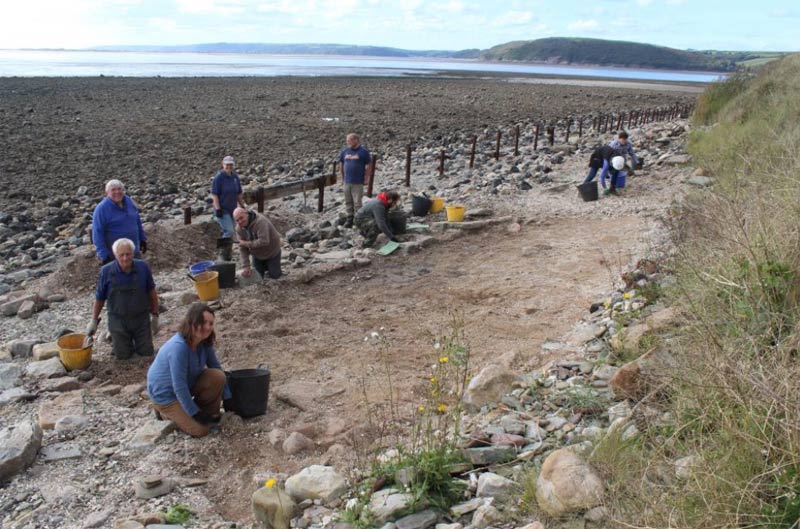 The walls of Building 7 just beginning to appear from underneath the shingle.
The walls of Building 7 just beginning to appear from underneath the shingle.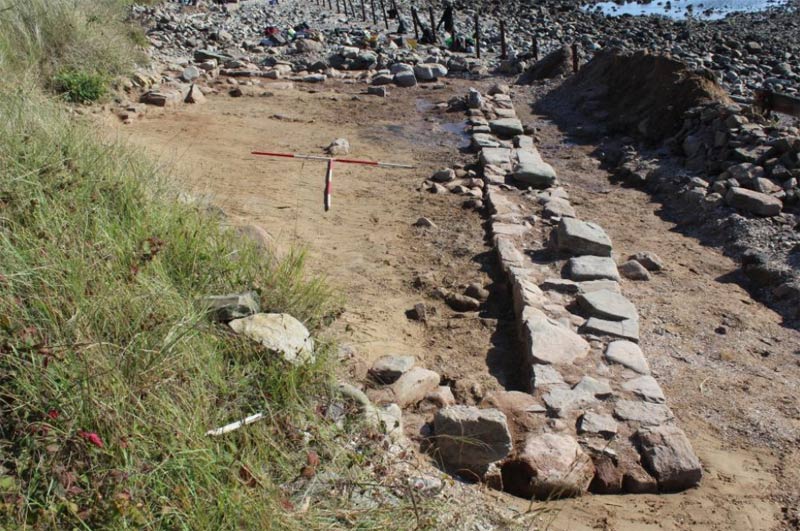 The west wall of Building 7
The west wall of Building 7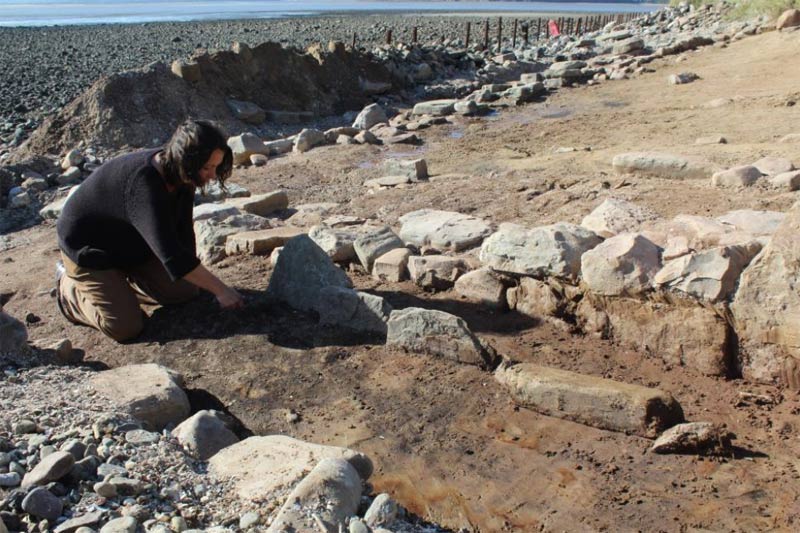 Hayley investigates a curious line of stones set on edge that run parallel with the outer face of the south wall.
Hayley investigates a curious line of stones set on edge that run parallel with the outer face of the south wall.